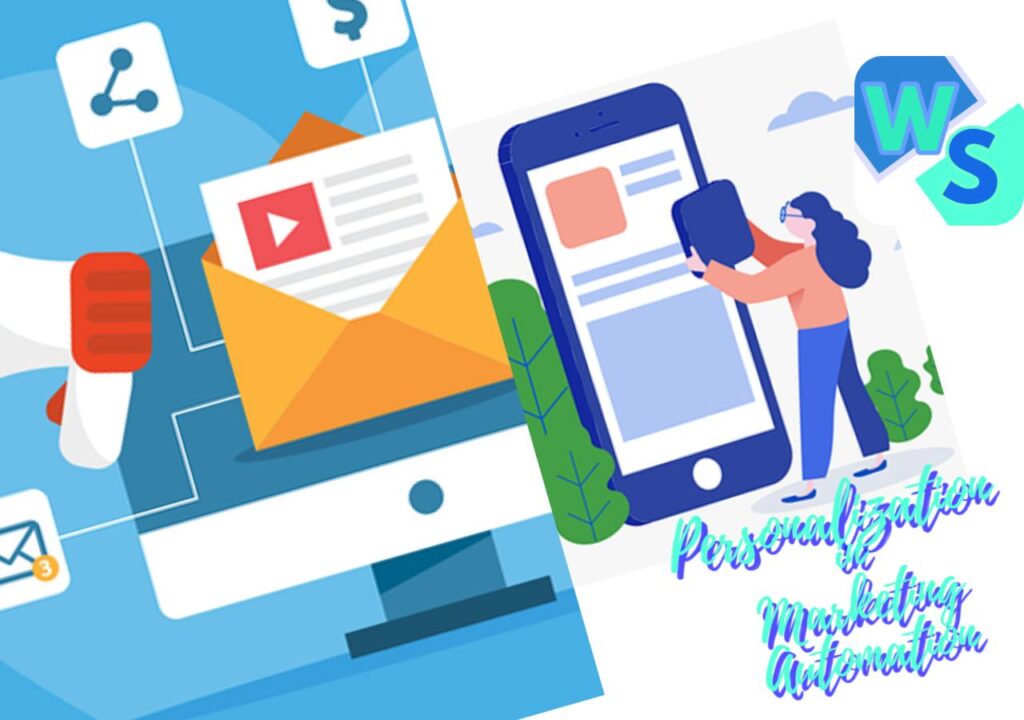Current Buzz of Edutech Marketing
Edutech marketing’s buzzing with change, fueled by the boom in the industry and the sharp rise in digital tactics. Business bigwigs need to keep their ears to the ground if they want to keep up with this fast-paced scene.
Edutech Market Boom
Lately, the edutech market’s been on a real growth spurt. Back in 2020, this scene was worth about $89.49 billion, a pretty penny, eh? If the forecasts are right, we’re looking at a 19.9% annual growth rate from 2021 to 2028, setting the stage for even more action (Insivia). HolonIQ is chiming in too, predicting this sector’s gonna hit a whopping $404 billion by 2025, with a steady 16.3% annual rise (Growth Ganik).
| Year | Market Valuation (Billions) | Growth Rate (% Yearly) |
|---|---|---|
| 2020 | $89.49 | – |
| 2025 | $404 | 16.3 |
| 2028 | – | 19.9 |
Riding the Content Wave
In the edutech universe, content marketing’s become the go-to move. Seems over 90% of edutech outfits are diving into content marketing shenanigans to fuel their growth. This not only gets their name out there but also helps them cozy up to potential customers (Insivia).
The content parade can take all sorts of shapes: blogs, podcasts, webinars, and infographics. By serving up juicy, relevant stuff, companies can reel in an audience that sticks around and eventually become loyal patrons.
Magic of Edutech Blogs
Edutech blogs are your golden ticket to more eyeballs and more website visits. They can crank up site traffic by a solid 55% and boost search rankings by nearly 500% (Insivia). Keeping a steady flow of killer blog posts not only tags a brand as a leader in the space but also sharpens their SEO game, making it a breeze for potential customers to stumble across what they’re selling.
By weaving solid edtech content marketing techniques into their fabric, business folks can tap into the strength of blogs to mingle with their perfect crowd, dish out secrets on edtech advertising strategies, and smash their marketing ambitions.
Email Marketing Trends in Edutech
Email marketing has elbowed its way into being a major player in edutech marketing strategy. Grasping the current trends can take your engagement and conversion rates from drab to fab.
ROI of Email Marketing
Edutech companies are high-fiving each other over email marketing’s bang for the buck. Every $1 tossed at email gets you about $42 back. That’s like turning pocket change into a coin collection! This killer return owes its dues to the targeted and personal touch that emails can bring. (Growth Ganik)
| Marketing Channel | Average ROI per $1 Spent |
|---|---|
| Email Marketing | $42 |
| Social Media Marketing | $2.24 |
| Pay-Per-Click (PPC) | $2 |
| Affiliate Marketing | $15 |
Check out the table—email marketing is kinda like the head honcho when it comes to ROI.
Benefits of Personalized Emails
Emails with a pinch of personalization are making a big splash. They get about 29% more rubbernecks opening them, and 41% more folks clicking through compared to those yawn-inducing generic emails. Target specific groups and cater to individual tastes and watch magic happen! (Growth Ganik)
| Metric | Generic Emails | Personalized Emails |
|---|---|---|
| Open Rates | 15% | 44% |
| Click-Through Rates | 2% | 5% |
The chart here shows that with a little personalization, email performance goes from zero to hero.
Importance of Mobile-Optimized Emails
Let’s face it, 70% of us are glued to our phones while reading emails. Edutech businesses gotta be smooth operators and create emails that play nice with mobile. Responsive designs can boost those open rates and keep folks engaged (Growth Ganik). Think clear layouts, text that doesn’t make your eyes squint, and links that don’t need a telescope to find.
Consider this when making your emails mobile-friendly:
- Short subject lines: Keep it snappy so it fits on tiny screens.
- Single-column layouts: Make scrolling an easy-peasy activity on mobile.
- Large, tappable buttons: Easier navigation for busy thumbs.
Stick to these handy tips, and your email campaigns in the edutech world can become the VIPs of marketing strategies. It’s an absolute must-have for any edutech marketing plan worth its salt.
Visual Content Marketing Strategies
Visual content is like the rockstar of edutech marketing these days. It’s grabbing attention left and right, making it easier to connect with everyone from students to teachers, and even parents. The secret sauce here is how visuals tell a story way better than a block of text ever could.
Impact of Visual Content
Let’s talk about the big deal with visuals. When you throw in some snazzy graphics or a sleek PowerPoint, folks perk up. People are three times more likely to share eye-catching stuff on social media than plain ol’ text blabber Growth Ganik. This means your brand’s name can travel faster and farther, all thanks to the power of good visuals.
| Type of Visual Content | Engagement Rating |
|---|---|
| Infographics | 3X more shares than plain words |
| Videos | 65% of marketers say it’s the bomb over Google Ads |
| PPT Presentations | Super share-worthy in schools |
Trends in Infographics and PPTs
Infographics and PowerPoints are still the big shots in the world of edutech marketing. They’ve got a knack for making tricky stuff look simple and good to look at, which naturally makes them shareable. With the crazy growth the edutech market’s seen, hitting $89.49 billion in 2020 and climbing at a clip of 19.9% per year Insivia, these visual gems are sticking around for good.
When whipping up infographics or fancy slides, keep the brand’s vibe front and center but don’t forget to keep it easy and understandable for the audience. Clear, nice-looking content wins the day.
Video Content in Edutech Marketing
Video’s not just hot; it’s on FIRE in edutech marketing. People dig watching videos more than staring at Google Ads, with 65% of marketers cheering for videos Growth Ganik. They’re the heavy lifters in the edutech sphere because they explain, show off products, and deliver educational goodies with flair.
Video also packs an emotional punch, bringing stories, how-tos, and real folks saying real things right into living rooms. Plus, email newsletters see a major bump when they sport some video or visual flair Growth Ganik. It’s a smart move to slot videos into emails for amped-up engagement.
So, to wrap it up, if you’re in the biz of edutech as an owner, CEO, or someone rocking the marketing title, going big on visuals like infographics, PPTs, and videos can be your golden ticket. Keep an eye on these edutech marketing hacks and watch your connection with your audience skyrocket.
Emerging Technologies in Edutech
EdTech is getting a serious upgrade thanks to some nifty new tech. Companies are using these advancements to spice up learning and sharpen marketing tactics. Let’s break down three game changers: AI’s role, the explosion of EdTech apps, and the mashup of AI with VR and AR in education.
Role of AI in Edutech
Artificial intelligence is fast becoming the MVP in EdTech. The market for AI in education is on track to hit $6.22 billion by 2025, rocketing with a growth rate of 36% from 2022 to 2030. This surge hints at the promise of teaching setups that respond to each student’s quirks and needs (Solguruz).
AI’s not just a teacher’s pet; it’s handling classroom chores, acting as a smart tutor, and even crunching numbers on student data to boost results. For those in the biz, knowing AI’s tricks can help create spot-on marketing that showcases a product’s smarts and flexibility.
Key AI Applications in EdTech:
| Application | What It Does |
|---|---|
| Intelligent Tutoring Systems | Custom-tailored lessons based on how students are doing. |
| Automated Grading Systems | Faster grading for teachers, saving oodles of time. |
| Learning Analytics | Digs into student info to spot patterns and fine-tune teaching. |
Rise of Edutech Apps
EdTech apps are shaking up how lessons get delivered. Thanks to tech like AI, these apps are more hands-on and cozy, letting students learn anywhere, anytime. New features like game-like mechanics and smart learning adjustments are making learning more appealing.
These apps are great for students and offer teachers tools to keep their classrooms in check. Grasping the latest app trends can fine-tune marketing strategies. For instance, pushing better user experiences can set a product apart in a packed field.
Popular Features in EdTech Apps:
| Feature | Why It’s Cool |
|---|---|
| Gamification | Fun elements like rewards and challenges boost motivation. |
| Interactive Content | Keeps users hooked with rich media that helps them remember and understand better. |
| Customization Options | Lets learners tweak their learning journey to their tastes. |
Integrating AI, VR, and AR in Education
Combining AI, virtual reality, and augmented reality packs a punch, offering learning experiences that make the old ways look boring. AI can catch user reactions in VR and AR to tweak educational content on the fly.
With the trend catching on in EdTech, businesses have a golden chance to market products that offer more immersive and engaging learning escapades.
Benefits of Integrating AI, VR, and AR:
| Technology | What’s the Big Deal |
|---|---|
| AI | Boosts private lessons with tech that gets smarter over time. |
| VR | Gives lifelike setups that make tough subjects clearer. |
| AR | Adds interactive touches that beef up the classroom with more info. |
As EdTech keeps evolving, keeping tabs on these hot new technologies is crucial for businesses looking to revamp their edutech marketing moves. Embracing tools like AI, VR, and AR can help companies reel in broader audiences and spark excitement in the learning process.
Influencer Marketing in Edutech
Wanna know how edutech brands are blowing up online? It’s all about influencer marketing. By teaming up with social media hotshots, education technology companies can seriously up their game.
Getting the Word Out with Influencers
Influencer marketing is like caffeine for edutech—it keeps everything buzzing. Partnering with famous faces in the education or tech worlds lets these companies latch onto existing fanbases. It’s kinda like hitching a ride on a celebrity bandwagon, but for homework help (LinkedIn).
| Type of Influencer | Follower Range | Engagement Rate |
|---|---|---|
| Micro-influencers | 1K – 100K | 5% – 10% |
| Mid-tier influencers | 100K – 1M | 3% – 5% |
| Macro-influencers | 1M+ | 1% – 3% |
Choosing the right influencer is like picking the perfect Netflix series—kinda depends on what you’re in the mood for. Micro-influencers might be small potatoes in the follower count but often pack a punch in engagement, making them the secret sauce for precise marketing targets.
Why Influencers are the Cool Kids on the Block
Hanging out with influencers lets edutech brands join the cool kids’ table. First off, they get a direct line to folks who are actually interested in what they’re selling. Like a fast pass at Disney, this can lead to higher sales and make the brand feel like a rockstar (LinkedIn).
Teaming up also means having your message shouted from the digital rooftops. Influencers know their stuff and can help create content that sticks. Plus, they’ve got this whole “people trust me” thing going on, which is golden for spreading the word.
Keeping It Real with Influencers
No one likes a phony, right? So, edutech brands need to pick influencers who vibe with their brand and fans. It’s about making sure the match feels right, like peanut butter and jelly (LinkedIn).
To keep it real, encourage influencers to share their own stories about the brand. It’s the secret weapon for content that feels more like a chat with a friend and less like a billboard screaming ‘buy me.’
Tapping into influencer marketing isn’t just a nice-to-have, it’s a game-changer for edutech brands wanting to stand out. Want more insider tips? Check out our pieces on edtech marketing tactics and cool campaigns that work.
Generative AI in Marketing
Generative AI’s making waves in marketing, especially in edutech. This tech opens up new paths for creativity, giving marketing a fresh spin and a boost by making everything more personal and unique.
Shaking Up Marketing Creativity
With Generative AI, the game’s changed for marketers designing and rolling out captivating stuff. Think of it as the ultimate sidekick that helps you tweak and make your content shine, all thanks to tracking its performance and feedback from people. Imagine ad campaigns that don’t just talk to the crowd but kind of know them—making advertisements that are not just ads, but stories that click with people and get them buzzing. This sort of creative zest keeps them effective and unforgettable (CSM Tech).
Cool Ways to Use Generative AI
This AI stuff ain’t just a one-trick pony; it’s got loads of uses. Brands with clout like Coca-Cola, Airbnb, and Burger King are already riding this wave for everything from building emotional connections to sparking up their visual game and rocking their content across platforms. Here’s a peek at what they’re doing:
| Area | What They’re Doing |
|---|---|
| Emotional Branding | Weaving stories that hit home |
| Visual Design | Cranking out logos and catchy materials |
| Content Marketing | Making blog posts feel like a personal chat |
| Social Media Marketing | Crafting posts and tweets with personality |
| Email Marketing | Giving email subjects and body a persuasive twist |
Getting Personal With Customers
Generative AI steps up the personalization game, helping marketers handpick suggestions that feel made-just-for-you. This kind of personal touch boosts how customers connect, showing you get them, and it builds trust. In edutech, think personalized learning that hooks students so they stick around and enjoy the ride.
For edutech companies, using generative AI means smarter outreach and marketing that don’t just keep up but lead. It’s all about tailored experiences that keep users coming back for more.




















